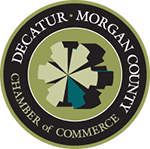Our Residents Take Notice: Roads and Paving


Well maintained roads are a crucial element in economic development, residential growth and what I consider one of the most important public services along with utilities and first responders.
Poorly maintained roads stifle mobility, raise vehicle operating cost and portray a negative appearance to potential investors, whether they’re a new business seeking to relocate here or a home developer looking to add rooftops.
The City of Decatur is responsible for approximately 830 lane miles of road. A lane mile is one mile of a single driving lane. Most residential streets in Decatur are a minimum of two driving lanes, meaning every mile you drive in most neighborhoods equates to two line miles.
The current cost to resurface every road in our city is $60 million.
The past four years, we’ve averaged $715,000 on resurfacing projects. At that pace it would take 84 years to replace our roads. FY21 saw a $1.2 million budget for resurfacing, and the current council added another $1.2 million earlier this year. That puts us on a 50-year pace, and while not ideal, has been manageable financially.
Someone once told me no one will move to a city because of fresh asphalt. They may not, but new businesses and residents looking to relocate here pay attention.
Our residents take notice. That’s enough for me. And yes, perhaps there are momentary slowdowns and orange barrels to navigate, but the temporary inconvenience leads to long range progress towards reliable infrastructure.
To take advantage of the growth our area is currently seeing, well maintained roads are a crucial element for sustained long-term growth, economic development and happy residents.
Carlton McMasters is vice president of J&M Signs in Decatur and represents District 3 on the Decatur City Council as Pro Tem. McMasters is the Council liaison to the Decatur-Morgan County Chamber. This post is the first in a four-part series focusing on infrastructure and the impact it has on our business community.
